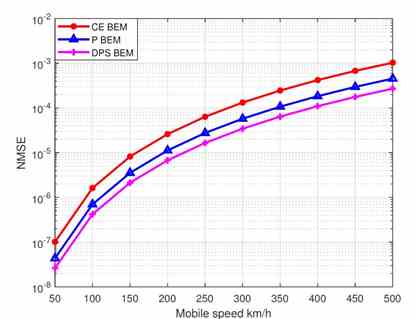An Overview of Channel Estimation Technology in High-Speed Railway Communications
Published 12 August, 2023
To guarantee safe train operations and provide passengers with convenience, such as seamless internet service and robust entertainment options, there is an increasing need for high-reliability, high-data-rate wireless communications. Wireless communication technologies, for a significant part, heavily rely on the acquisition of channel state information (CSI), making channel estimation vital to their performance. However, offering satisfactory service to a large user base at high speeds presents various challenges.
In a study published in the KeAi journal High-Speed Railway, a team of Chinese researchers has outlined the challenges, proposed solutions, and future development directions related to channel estimation technology in high-speed railway (HSR) wireless communication.
"The HSR signal propagation environment is complex due to reflections from physical objects that cause time dispersion. These reflected signals can combine destructively, resulting in multipath fading. High data rate broadband signals may encounter frequency-selective multipath effects, while high mobility can lead to Doppler spread, inducing a time-selective channel," explains co-corresponding author of the study, Wei Chen. "Channel estimation in HSR confronts challenges such as high estimation overhead and inter-carrier interference (ICI) within the orthogonal frequency-division multiplexing (OFDM) system.”
The team also explored these channel features to achieve channel dimensionality reduction, refine traditional algorithms based on channel characteristics, and eliminate ICI for OFDM, thereby improving channel estimation accuracy.
“Future communication systems should aim to advance the intelligent and digital progression of HSR, providing faster and more comfortable services to a multitude of simultaneous passengers at speeds reaching up to 500 km/h or even higher,” added Chen. “Orthogonal Time Frequency Space (OTFS) system and Reconfigurable Intelligent Surface (RIS) represent the most promising technologies to integrate with HSR.”
Image:

INFLUENCE OF MOBILE SPEED ON CHANNEL ESTIMATION ERROR OF BASIS EXPANTASION MODEL. CREDIT: The AUTHORS
Contact author name, affiliation, email address: Wei Chen, professor and doctoral supervisor of Beijing Jiaotong University, doctor and post doctor of Cambridge University, UK; In recent years, the main research directions include smart wireless communication, high-speed mobile communication, etc. weich@bjtu.edu.cn
Conflict of interest: The authors declare that they have no known competing financial interests or personal relationships that could have appeared to influence the work reported in this paper.
See the article: Xuying Chen, Wei Chen, Xiao Gong, Bo Ai, Ian Wassell, Wireless channel estimation for high-speed rail communications: Challenges, solutions and future directions, High-speed Railway, Volume 1, Issue 1, 2023, Pages 18-22, https://doi.org/10.1016/j.hspr.2022.11.004

